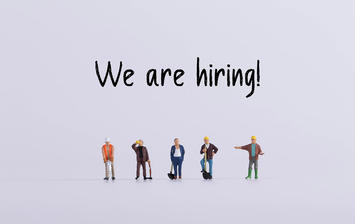
The COVID-19 pandemic has left pain and tragedy in its wake. But it has also created a unique opportunity to address the country's persistent class divides, thanks to a persistent lack of labor resulting from the pandemic. In a world economy that has seen labor's share of income drop for generations, this labor shortage could provide some restored leverage for both white and blue collar workers.
The labor shortage was a reversal from the earlier impact of the pandemic on labor. Initially, COVID-19 devastated the working class and parts of the private sector middle class; the harsh lockdowns imposed in many places caused upwards of one third of small businesses to close down permanently and decimated the service industry.
But as the economy has recovered, despite high unemployment over 6 percent and over 8 million fewer positions, there's a shortage of workers, including 7.4 million unfilled jobs. And it's not relegated to any one industry. Companies like John Deere, its order book strong due to a worldwide surge in commodity prices, are struggling to find workers willing to take jobs in its Iowa factories, a phenomenon common across the industrial economy. We're seeing a massive shortage of virtually every kind of labor, including blue collar jobs. What this means is that companies have to work harder to attract workers; even fast-food restaurants like McDonald's are offering low end service workers signing bonuses, higher wages and more humane working conditions.
And the blue-collar jobs gusher could just be beginning. Arvind Kaushal, leader of the manufacturing practice at Booz & Company, has estimated that as many as 600,000 new manufacturing jobs cannot be filled. The current shortage of welders alone is expected to grow to 400,000 by 2024. Much the same can be said about logistics, which basically kept the country running amidst the pandemic lockdowns: A shortage of tanker drivers threatens gas deliveries this summer. The shortfall is now so severe that Amazon has set up its own incubator for new trucking companies.
Moreover, the shift to work from home that the pandemic birthed represents a huge opportunity for white collar workers. Once dragooned into offices far from affordable homes, many office workers have embraced new hybrid models, working remotely not only from home but from dispersed offices and coffee shops. Stanford economist Nicholas Bloom has suggested at least 20 percent of the workforce will work remotely even after the pandemic ends, up from 5.7 percent in 2019. And there's evidence that remote workers have been more productive, with many executives surprisingly pleased with the results.
Besides surprising productivity gains registered during the pandemic, many workers are creating an enhanced "life-work balance" thanks to remote working. This is critical to millennials and women with children trying to get back into the labor force once schools reopen. And they're not willing to give it up now that the pandemic is over; in a recent survey of over 5,000 employed adults, four in 10 American workers expected some level of remote work flexibility post-pandemic.
Read the rest of this piece at Newsweek.
Joel Kotkin is the author of The Coming of Neo-Feudalism: A Warning to the Global Middle Class. He is the Presidential Fellow in Urban Futures at Chapman University and Executive Director for Urban Reform Institute. Learn more at joelkotkin.com and follow him on Twitter @joelkotkin.
Photo: Marco Verch via Marco Verch website under CC-BY-SA 2.0.













Let's see
whether female labor-force participation rises back. It's partly dependent on availability of (low-wage) child and elder care.